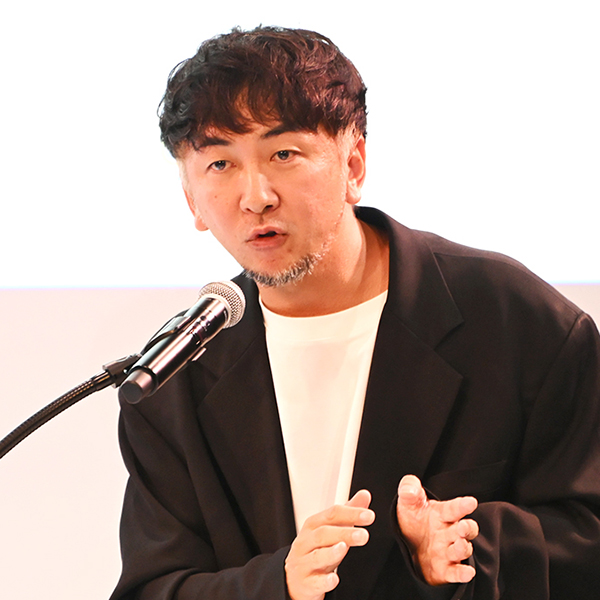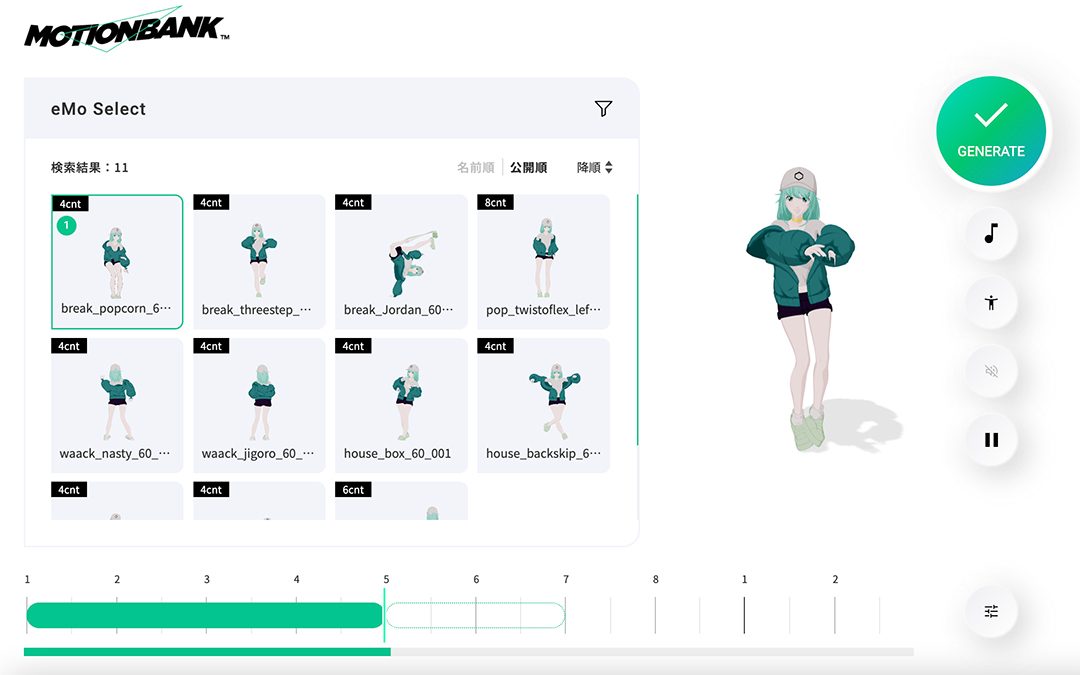- TOP
- About
- Affiliated League
- Information
- League Members
- Partners
- League Report
Search League Members
-
公式X

"Why did you start your own business?"
"Can you say, from the bottom of your heart, that you believe in your idea 100%?"
If you hesitated for even a moment to answer, you should read this article.
This time, we spoke with Kantaro Kanda, also known as Charisma Kantaro, the CEO of Anomaly Inc. He launched the professional dance league "D.LEAGUE" and operates "MOTIONBANK" to bestow the value of copyright upon the movements of dance itself.
He says, "I'm transplanting the OS inside my head into other people."
Here is an entrepreneur who questions common sense, challenges established structures, and, while sometimes being laughed at as crazy, seeks to change the world with immense energy. Deep within his thinking lies a brutal truth about success and a philosophy that supports an unbreakable spirit—lessons from which everyone can learn.
■Profile

Kantaro Kanda
CEO, Anomaly Inc.
Kantaro Kanda, also known as Charisma Kantaro, founded Anomaly Ltd. (now Anomaly Inc.) in 2004 and produced "DANCEALIVE," one of the world's largest street dance solo battle tournaments. In 2021, he established the world's first professional dance league, "D.LEAGUE" (where he also serves as COO of D.LEAGUE Inc.).
He continues his efforts to change the world by building an economic sphere centered on dance, including the development of the dance copyright management platform "MOTIONBANK."
First, for our readers who may not be familiar with your work, could you tell us about the projects you are currently involved in?
Kanda: The dance industry has a major, long-standing problem. Copyright doesn't function correctly for dance choreography and movements. Rights that are commonplace in the worlds of music, film, and anime don't exist for dance. Dancers create wonderful art but are often treated as mere "adjuncts" dancing next to the main star, and their value has never been properly recognized.
As a former dancer yourself, you must have felt that problem keenly.
Kanda: Exactly. When I started my business back in 2004, worlds like K-1 fighting had a clear path for athletes to rise to stardom based on their skill. But the dance world had nothing like that. You either became a backup dancer or got a rare feature on TV. It wasn't a world where a dancer could be the protagonist through dance alone.
So you decided to create that world yourself.
Kanda: If someone else had been creating it, I would have wanted to aim for the top as a player. But nobody was doing it. So I realized I had to do it myself. At first, I launched the dance battle event "DANCEALIVE" as a place where dancers could shine.
However, what I really wanted to do from the very beginning was to solve this copyright issue. But at the time, the idea was dismissed as "impossible." So, while keeping that ambition in my heart, I first poured all my energy into growing the dance events and expanding the dance market itself.
And now, you're tackling that long-standing issue with a technology called "MOTIONBANK." How does this system work?
Kanda: Initially, I hypothesized that as motion capture technology advanced, we could digitize the subtle nuances of an individual's dance style, and that data could serve as proof of creation. I spent years researching this. But at a certain point, the technology stopped evolving. The number of bones in the human skeleton is fixed, so on a data level, everyone's dancing looks the same. I almost gave up at that point.
But then I changed my way of thinking. I asked myself, "Why does music have copyright?" I realized it's because of "sheet music." Composers take the universal notes of Do-Re-Mi-Fa-So-La-Ti and arrange them in a unique sequence to create a one-of-a-kind piece of music.
I decided to apply this to dance. We took the basic steps of dance—for hip-hop, there are about 400—and digitized each one, creating an engine that can arrange them like musical notes. Users, even if they can't dance themselves, can freely combine these basic steps to create original choreography, or what we call a "Bufu" (dance score). By writing the data of that combination to the blockchain, we can prove that "this person created this sequence of choreography." That's the basic idea behind MOTIONBANK.
That's truly a revolution for the dance world.
Kanda: Yes. The same kind of revolution that happened in the music world with the birth of Vocaloid, allowing anyone to become a composer, is now happening in the world of dance. Even people who aren't dancers can become choreographers. It's truly the liberation of dance.
If this system is adopted as an infrastructure by various game companies and SNS platforms, a future will come where, for example, when a dance goes viral on TikTok, revenue is distributed not only to the composer of the music but also to the choreographer of the dance. If that happens, companies and creators alike should all be happy.

Even with the idea, I imagine bringing it to life was no small feat. What was the driving force that sustained you through the tedious work, especially the "patient and continuous digitization"?
Kanda: First of all, every crazy person starts from a place of believing 100%, without any evidence, that their vision will absolutely make the world a better place.
So, first, you have to make yourself believe.
Kanda: That's right. And next comes the task of implanting that vision into the minds of others. Naturally, people will object or doubt you. You have to anticipate every possible objection they might have and crush them all in advance.
For example, people say, "Won't AI just do everything for us once it evolves?" To that, I answer, "Humans sing because they want to sing and dance because they want to dance. That fundamental desire won't disappear." The more you repeat that kind of preparation, the stronger and more absolute the image in your own mind becomes.
Once you've implanted that image in everyone's minds and they think, "What this guy is doing is definitely right," they'll in turn tell someone else, won't they? I call this an "OS transplant." You're installing it into other people's brains. All major movements in the world are built on this "OS transplant."
"OS transplant" is quite a provocative phrase.
Kanda: It's a very simple story. If a dancer's creative work generates revenue, isn't it better if a portion of that is returned to them? To make that happen, I am simply continuing to transplant my OS into the world.
MOTIONBANK seems to be looking beyond dance to the intellectual property of all "movements," and even applications in robotics. While you are pushing the boundaries of technology, you also value the excitement of real-life venues like DANCEALIVE and D.LEAGUE. How do you view this balance?
Kanda: What do you think will happen when technology advances to the point where humans no longer need to work? Humans will become idle. And what do idle humans do? They eventually return to analog places. They gather around a campfire to talk, drink, and dance.
So the cutting edge of technology connects back to analog communities.
Kanda: That's right. The thing humans fear most is "loneliness." This has been proven by certain statistics. And I believe the only thing that can resolve it is community. That's why offline communities are actually what technology is ultimately aiming for.
I've also set up a company in Senegal, Africa, where I engage in extremely analog activities with local dancers. But if we use MOTIONBANK to digitize the dances born there, we can create a future where that data connects with the world, generates revenue, and gives back to the Senegalese dancers. It's crucial to advance both the analog and the technological with the same level of passion.
Finally, do you have a message for those who aspire to start a business?
Kanda: First, if you don't genuinely want to change the world, you're better off not starting a business. If you just want to make money, there are plenty of easier ways to do it. There's no need to choose the difficult path of a startup.
If you're going to start a startup, you should first ask yourself, as if in a Zen koan: "What do I want to accomplish?" "Why do I want to do it?" "Who will it help?" Far too many people haven't thought these answers through.
Those are fundamental questions.
Kanda: I want to use this analog thing called dance and technology to connect the world like crazy. And I genuinely believe that the more time people spend involved in dance, the more peaceful the world will become.
That's because my parents are from Nagasaki and Hiroshima, making me a third-generation survivor of both atomic bombings. What I learned from the war stories I heard growing up is the sense that conflict may never disappear. But we can fill the "time" people spend fighting with time spent enraptured by dance. While watching the FIFA World Cup, people forget about war, don't they? It's the same principle.
Of course, this is a grand vision. But before that, there's the immediate reality that the dancers right in front of me can't make a living from dance. So, I'll create a system where they can. I'm convinced this is a job I can dedicate my entire life to, which is why I can do it with this much passion.
If you start with a half-hearted resolve, only suffering awaits. If you're going to do it, you must keep questioning yourself and believe in your answer 100%. Everything starts from there.
Editor's Note
Even after the interview ended, Kanda's words echoed in my mind.
"I'm transplanting the OS."
It wasn't a phrase typically used when discussing startups or entrepreneurship; it carried a resonance of a certain resolve, tenacity, and, to put it more strongly, a hint of "madness."
For 20 years, driven by the single, pure desire to "create a world where dancers are justly valued," he has contemplated like a Zen monk, crushed all opposing arguments, polished his own OS, and attempted to install it into the world. Kanda's story was both passionate and terrifyingly logical.
This article is not just for those interested in dance or startups.
"Why are you doing this?"
—How will you answer this fundamental question posed by Kanda?
■Related Websites
Anomaly Inc.
/
MOTIONBANK